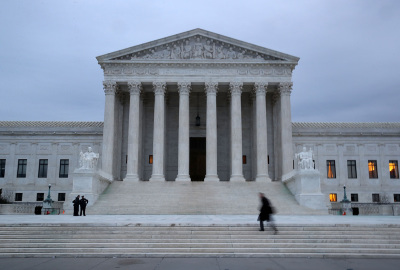
Just over two weeks ago, the U.S. Supreme Court issued a unanimous decision, Ames v. Ohio Dept. of Youth Services, which, while flying under much of the judicial radar, has profound implications for the future of American society.
The Ames decision involved Marlean Ames, a fifteen-year employee of the Ohio Department of Youth Services, who was denied a promotion to a position that was filled by a person with less credentials than she possessed (she had a college degree and the other person did not.) Subsequently, Ms. Ames was demoted to a lesser position. Ms. Ames, who is a white heterosexual female, claimed she was the victim of discrimination, since the supervisor making the decision, the person given the promotion, and the person occupying her previous position after her demotion were all gay.
Ms. Ames was denied the right to bring her discrimination case to court because in 20 states (including Ohio) and the District of Columbia, in order for a person from a majority group (white and heterosexual) to bring such a case, he or she must provide additional evidence of “background circumstances,” known as the “McDonnell-Douglas Framework” before she could bring her case to court. This additional burden only applies to “majority” claimants like Ms. Ames, not minorities.
The Supreme Court justices ruled unanimously that such an additional burden being placed only on a certain class of Americans was unconstitutional. Adding an exclamation mark to the unanimous ruling was the fact that the opinion was written by Justice Ketanji Brown Jackson, the newest member of the Court, with a concurring opinion written by Justice Clarence Thomas, joined by Justice Neil Gorsuch.
The fact that such a ringing endorsement of the colorblind comprehensiveness of the Federal civil rights laws was written by one of the Supreme Court’s black justices, joined by the second black justice, underscores the significance of the Ames ruling.
In her ruling, Justice Brown did not mince words.
“By establishing the same protections for every ‘individual’—without regard to that individual’s membership in a minority or majority group—Congress left no room for courts to impose special requirements on majority group plaintiffs alone.”
Justice Jackson thus ruled that the “background circumstances” rule required only by members of a “majority” group is unconstitutional in denying equal treatment under the law. Justice Thomas’s concurring opinion underscored and emphasized Justice Brown’s conclusions.
Why is the Ames decision potentially so significant? It may very well signal the death knell of “reverse discrimination” as a viable legal concept. Reverse discrimination is the label often given to court decisions in which a member of the “majority” was denied an equal right to sue for discrimination when they were passed over for promotion in favor of a lesser qualified member of a “minority” community.
Reverse discrimination has led to the unintentional impact of perpetuating prejudice. Too often, people who were not prejudiced were tempted to adopt such views when they were passed over for promotion by people who had less qualifications and less seniority for the sole purpose of achieving more diversity. I have personally known people who had harbored no obvious prejudice, who became more prejudiced when they were victimized by such legal prejudice.
What the Ames decision may very well signal is that America is preparing itself to consign the phrase “reverse discrimination” to the legal ash heap of history—a vestigial phrase only applicable to a sad, tragic legal past, no longer afflicting the legal present or future.
As Chief Justice John Roberts wrote in 2007, “The way to stop discrimination on the basis of race is to stop discriminating on the basis of race.” (Parents Involved in Community Schools v. Seattle School District No. 1, 2007).
Dr. Richard Land, BA (Princeton, magna cum laude); D.Phil. (Oxford); Th.M (New Orleans Seminary). Dr. Land served as President of Southern Evangelical Seminary from July 2013 until July 2021. Upon his retirement, he was honored as President Emeritus and he continues to serve as an Adjunct Professor of Theology & Ethics. Dr. Land previously served as President of the Southern Baptist Convention’s Ethics & Religious Liberty Commission (1988-2013) where he was also honored as President Emeritus upon his retirement. Dr. Land has also served as an Executive Editor and columnist for The Christian Post since 2011.
Dr. Land explores many timely and critical topics in his daily radio feature, “Bringing Every Thought Captive,” and in his weekly column for CP.
















